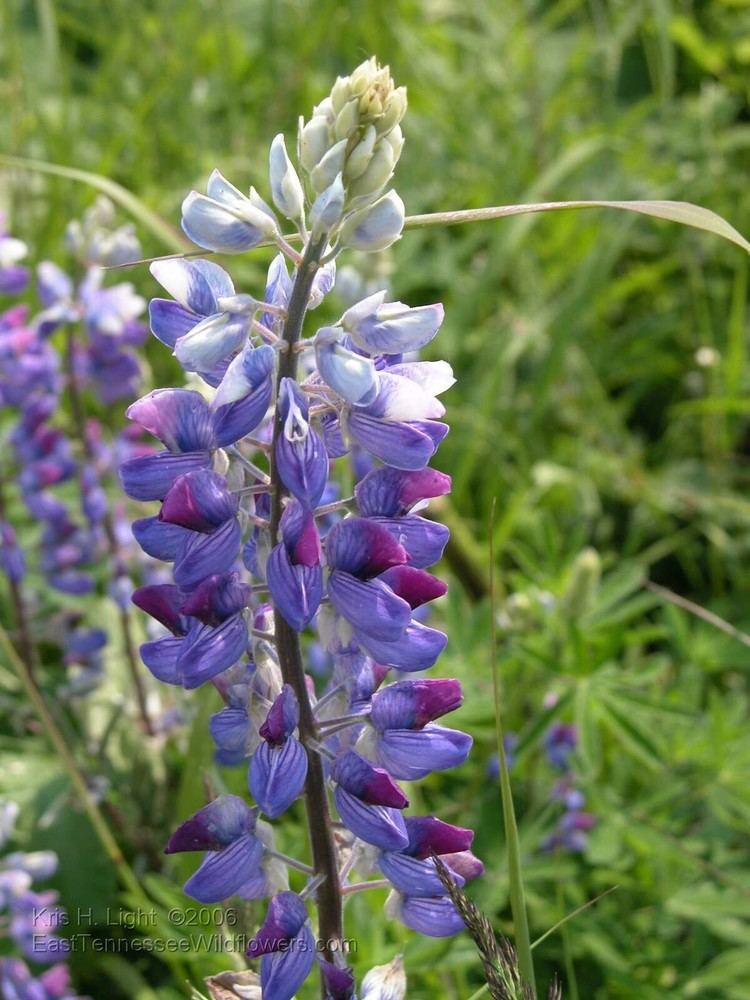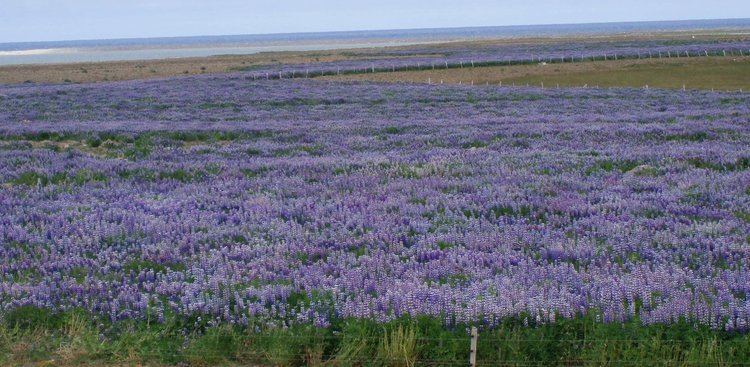Tribe Genisteae Rank Species | Subtribe Lupininae Higher classification Lupine | |
 | ||
Similar Lupine, Lupinus perennis, Legumes, Lupinus arboreus, Lupinus littoralis | ||
Nootka lupin lupinus nootkatensis alaskal pina
Lupinus nootkatensis, the Nootka lupine, is a perennial plant of the genus Lupinus in the legume family, Fabaceae. It is native to North America. The Nootka lupine grows to 60 cm tall. Late in the 18th century it was first introduced to Europe.
Contents

The Nootka lupine is common on the west coast of North America, and is one of the species from which the garden hybrids are derived, being valued in Britain and other North-European countries for its tolerance of cool, wet summers. It grows along roadsides, gravel bars, and forest clearings from the Aleutian Islands, southcentral Alaska, and along the Panhandle to B.C. Rigorous self-seeders as they are, lupine can often be seen along roadsides and in open meadows, their bright blueish purple flowers catching ones eye from quite a distance. Their long tap roots make transplanting difficult, so sowing seed is preferable.

Taxonomy

The species was first described as Lupinus nootkatensis in 1810 by James Donn in Botanical Magazine, Vol. 32, Page 1311.
On the Plant List the species is divided in two varieties:
Toxicity

A member of the Pea family (Fabaceae), lupines form seeds in fuzzy pods that may be attractive to children. The seeds of the lupine can be toxic, though toxins flush through the system quickly and are not cumulative. However, internal use is not advised.
Reclamation use
In Iceland, the plant was introduced in the first half of the 20th century to combat erosion, speed up land reclamation and help with reforestation. The Nootka lupine has shown itself to be a very effective plant for land reclamation in Iceland. Dense plant cover and soil fertility can be gained within a relatively short time span, where the growth of the lupine is not limited by droughts. The lupine is well suited for reclamation of large, barren areas because of its nitrogen fixation and rapid growth. Furthermore it has an ability to extract phosphorus from compounds in poor soils. In some places, however, this is by many people thought to have caused problems because of the lupine spreading too quickly. Since other plants find it difficult to root in the loose, eroded soil where it is generally planted, the lupine can grow unhindered and creates monocultures which is believed to prevent native flora from flourishing. On the other hand the species can make fertile soil in deserted areas gaining ground for a plant colonisation process enhancing a richer ecosystem with greater biodiversity.
Naturally the lupine retreats gradually along with increased fertility of the soil and gives way for other species. This is evident on sites in Iceland where the lupine was introduced early, such as in Heiðmörk near Reykjavík. In its native habitat in Alaska, the Aleutian Islands and British Columbia the Nootka lupine is most common on eroded sites such as river banks, along roads etc. In the end this will most probably be the case in Iceland as well but how long this will take is uncertain and subject to varied factors.
